Apartment marketing
Virginia Love | Collective Conversations
Release Date: 08.08.2023
In this episode, Mike Brewer sits down with Virginia Love – Industry Principle at Entrata. Virginia is a highly respected expert in the multifamily industry with a long history in multifamily leasing, marketing, and operations. She is a champion of the people in our industry and has a deep understanding of the ways that technology impacts the front-line teams and believes that it is our responsibility to elevate the role our team members play in the success of our industry.
Key Discussion Points:
- Lasting impact of the pandemic: The pandemic shed attention on the importance of the site teams and led to the current focus on them as the drivers of performance and doing what is right for the site teams, recognizing the need to reconsider appropriate wage levels. The pandemic accelerated the pace and adoption of technology and forced companies that were sitting on the sidelines to engage with virtual tours, self-guided tours, and more.
- Culture Matters: Entrata is a technology company that actively engages its customers in the Entrata culture – so much so that they become invested in the Entrata brand.
- Economic Inclusion: For decades, the only impact for residents who paid their rent on time was not incurring late fees and being sent to collections. Entrata offers a program that reports resident payment history to the major consumer credit reporting agencies. Giving renters the ability to build their credit by simply paying their rent is a significant economic empowerment tool.
- The Value of Yes – Advice if you desire to grow your multifamily career: Get involved. Make Yourself Indispensable. Do whatever other people don’t want to. Get active in your Apartment Association, IREM, or NMHC. Take every opportunity to learn and don’t wait for someone to teach you. There are countless ways to build your knowledge so take charge of your education and growth.
In between the non-stop camaraderie and laughter, Mike and Virginia share practical tips and advice based on their extensive knowledge and expertise in the multifamily industry.
Whether you’re a seasoned investor, property manager, vendor/supplier, or someone interested in learning more about the multifamily market, this series offers valuable insights that can help you navigate the challenges and seize the opportunities in this dynamic industry.
About Mike Brewer
Mike Brewer is enthusiastic about people, technology, and the world of multifamily. He serves as President of RADCO Residential and COO of The RADCO Companies. As the Founder of Multifamily Collective, Mike draws on his deep understanding of the multifamily space and is passionate about sharing insights and wisdom through a series of Collective Conversations with others in this industry. This podcast creates a platform for industry professionals to connect, learn, and grow together.
About Virginia Love
Virginia Love, Industry Principal at Entrata is directly involved with marketing, product and sales as a liaison from the multifamily industry to these departments. Before joining Entrata, she held prominent leadership roles for apartment owners and operators such as Trammell Crow and ING Clarion. Immediately prior to coming to Entrata, she was Vice President of Leasing and Marketing for Waterton Residential. With nearly three decades of industry experience, Virginia has served on numerous multifamily committees and boards for industry organizations including the Atlanta Apartment Association, Georgia Apartment Association, National Apartment Association, National Multifamily Housing Council and Zillow Multifamily Advisory Board. Love served as the 2018 Chairperson of the Georgia Apartment Association and the 2011 Chairperson of the Atlanta Apartment Association. Virginia is a National Apartment Association Lyceum graduate. In 2021, she was named a Multifamily Influencer by GlobeSt. Real Estate Forum and was honored by Connect CRE’s Women in Real Estate Awards for 2022. Virginia is also a part of the Apartment All Stars.
Additional Resources:
Some of the world’s largest owners and operators use Entrata’s vast suite of products to manage their entire portfolios using one operating system. Multifamily, Student, Affordable, Military, or Commercial – Entrata has the technology solutions to meet your needs. www.entrata.com
Sponsorship Info:
This episode is sponsored by: Updater
Updater is the app that gets residents move-in ready faster. Did you know that residents who are happy with their move-in experience are 59% more likely to renew their lease? Move-ins matter. Get them right with Updater. Visit go.updater.com/mike, and as a special gift to our listeners, Updater is offering a special gift when you book a demo.
Connect with Us:
We would love your feedback, questions, and topic suggestions for future episodes. Feel free to reach out to us via info@multifamilycollective.com or connect with us on [Social Media Platform(s)] LinkedIn, YouTube, and Facebook. Our podcast and interviews are also available on Apple Podcasts, Spotify, or anywhere you stream your podcasts.
Subscribe and Share:
If you enjoyed this episode, rate, review, and subscribe to our podcast on [Podcast Platform(s)] and share it with your friends, colleagues, and anyone who might find it valuable. Please help us spread the word about Multifamily Collective and empower others to thrive in the multifamily real estate industry.
If you or someone you recommend is interested in learning more about sponsorship opportunities, pleasecontact us.
Please subscribe to our weekly newsletter – The Collective Rundown
Thank you for tuning in to Multifamily Collective. Stay tuned for more exciting episodes coming soon!
Disclaimer:
The views and opinions expressed in this podcast are solely those of the individuals involved and do not necessarily reflect the official policy or position of MultifamilyCollective or any other organization mentioned during the episode. The podcast is for informational purposes only and should not be considered professional or legal advice. Always consult a qualified professional or your organizational leadership before making strategic, professional, financial, or investment decisions.
Share this:
Jesse Stein | Collective Conversations
In this installment of Collective Conversation, I catch up with Jesse Stein, Global Head of Real Estate at @airbnb , to discuss Airbnb-friendly apartments. Join us as we discuss:
✅ The business rationale behind Airbnb’s apartment program
✅ Resident requirements for participating in the program
✅ Airbnb’s role in owning or operating the buildings
✅ The potential for full-time listings on Airbnb
✅ Property management tools to ensure compliance with hosting limits
✅ Feedback from the multifamily industry and what drives participation
✅ Current eligible properties and units in the program
✅ The mix of new and established properties within the program
✅ Factors fueling Airbnb’s partnerships and resident leasing preferences
✅ How hosting limits are determined and their impact
✅ The sign-up process for renting in participating buildings
✅ Earning potential and its relation to tenant’s rent
Don’t miss this insightful conversation that explores the ins and outs of the Airbnb-friendly apartment program and the new opportunities it presents for residents, property owners, and managers alike.
Grab your favorite beverage, @FourSigmatic , for me and enjoy this insightful conversation exploring the ins and outs of Airbnb’s program and the new opportunities it presents for residents, property owners, and managers alike.
And don’t forget to Subscribe to @multifamilycollective on YouTube or wherever you get your Podcast (we are on all the platforms) for more discussions on the ever-evolving multifamily landscape!
Share this:
Multifamily Marketing: Design

Photo by Med Badr Chemmaoui on Unsplash
Design is a crucial component of multifamily marketing. It plays a key role in attracting potential residents, creating a memorable brand, and setting your property apart from the competition. According to Founder and CEO Mike Brewer of Multifamily Collective, becoming brilliant at using design in multifamily marketing requires a few key steps.
- Understand your audience: To create an effective design, you must first understand the needs, preferences, and behaviors of your target audience. What do they value in a living space? What are their lifestyle habits? What kind of visual language speaks to them? By researching and understanding your target audience, you can create design elements that resonate with them.
- Define your brand: A strong brand identity is essential to a successful multifamily marketing campaign. Define your brand values, mission, and tone. This will serve as a guiding principle for all your design decisions. Your brand should be reflected in all your marketing materials, from your logo to your property website.
- Use visuals to tell a story: Design is about more than just aesthetics. It’s about telling a story. Use visuals to connect with your audience emotionally, showcasing your property’s unique features, benefits, and amenities. High-quality photographs and video content can give potential residents a feel for the living experience at your property.
- Make it easy to understand: Complex designs or confusing layouts can detract from your message. Keep your design simple, intuitive, and easy to understand. A clean, streamlined design will help communicate your message effectively and make it easier for potential residents to take action.
- Stay consistent: Consistency is key in multifamily marketing. Your design elements, such as color palette, typography, and imagery, should be consistent across all your marketing materials. This will reinforce your brand and make it easy for potential residents to recognize your property.
Following these steps, you can create an effective design that attracts and engages potential residents and sets your property apart from the competition. With a strong design strategy, you can maximize the impact of your multifamily marketing efforts and build a successful brand.
Share this:
Referral Fees – Not Quite So Easy Breezy

Referral Fees – Not Quite So Easy Breezy
Referral fees have been a staple in the multifamily industry for decades. The programs are typically basic – residents tell their friends and families about their apartment community and send us qualified applicants who go on to move in and become residents. We post signs reminding our residents of the promotion – Earn $200 – $500! for every move-in. What we fail to do is simplify the rules for earning the referral fee. The small print can turn a fairly straightforward program into a very complex one and quickly deflate the joyful chance to turn a friend into a neighbor and pocket some easy cash.
I cringe when I think of a manager arguing with a resident about the five steps required to claim the fee and – Oops! You missed step #3! Sorry, that’s our policy. But thank you anyway. Do you feel the same pit in your stomach as I do when considering that scenario?
Rents are well above record levels which can be stressful for residents, making the chance to earn some extra dollars appealing indeed. So, if the rent were let’s say $1800/month, then the value of that new customer is more than $21k for the first year. The referral fee is peanuts comparatively. Instead, we often stand our ground and turn the initial resident into a raving enemy. You might win the fight, but the war is over. A happy resident tells a few people. An unhappy one tells the world.
A colleague of mine shared this story about a recent customer experience from a different industry altogether.
“Recently, my adult daughter purchased a new bed and mattress from a smaller online company, and she loved it! She did her homework in advance and had zero regrets. A few months later, my adult son took notice of her two thumbs-up review and bought a mattress, frame, and the works from the same company.
Since I was also on the hunt for a new mattress, I jumped on board and bought one, too. I know the story sounds improbable, but mattress shopping is really stressful, and if you know someone who actually loves their new mattress and the overall buying experience, that creates a huge level of trust. I don’t know about you, but it is awkward to go into one of the many Mattress stores found in every strip mall and shop while a salesperson hovers over you, encouraging you to sit or lay down on several of the floor models. Talk about a position where you have zero power! Back to our story – none of us had seen or even sat on the product before buying it – we relied on the words of a trusted family member in addition to online reviews and website information.
After all our financial transactions were complete and new beds were on the way, I realized that no one had used the right referral link to earn the $50 bonus. Bummer. I had corresponded with Shannon from customer support over some pre-purchase questions which she quickly answered. I used that contact to reach out and share our story – the family who each bought into the Big Fig experience. I acknowledged the fact that we failed to use the referral link. My email ended with this question, “Is there anything you can do to reward this much family loyalty?”
The company wasn’t required to do anything. We clearly missed the requirements (which included using the special link AND waiting until the 120-day trial sleep period ended.) I had no expectations but thought it was worth a shot.
Instead of highlighting the rules and requirements of the referral policy, the company chose to make it more than right. She replied quickly, thanked us for our support, and sent each of us a $50 Visa gift card. If I have the math right, that’s one more than we would have earned under the program if we had followed the referral rules initially.
Hats off to Shannon the Customer Support person who works for a company that understands the imperative to exceed expectations at every opportunity. The $150 they spent on Visa gift cards is a tiny fraction of the thousands of dollars we paid for our mattresses. And it guarantees that each of us will share the word with our friends and colleagues. (Hi friends & colleagues! Check out Big Fig Mattress!)
A $50 gift card is nominal and pays back far more than it costs. What really stands out here is that Shannon didn’t need four levels of approval and forms to give away the gift cards. She was empowered to make decisions on the spot that ensured an exceptional customer experience.”
What are you doing to empower your front-line team members to resolve situations and build brand loyalty? Are you giving your Shannons the opportunity to be the hero?
Please share your stories with us. (Oh – and hit me up if you need a new mattress!)
Help us grow the Multifamily Collective. Here are three small steps you can take that will really help. Each one is free, fast, and easy.
- Subscribe to the Multifamily Collective YouTube Channel. Like our videos and click the bell if you want to be notified whenever we add new content.
- Give us Five Stars on your preferred podcast app (here we are on Apple Podcasts). Your ratings help increase the number of people who find our content.
- Sign up to receive our newsletter.
Thank you for being part of The Collective!
Share this:
Mark Juleen | Collective Conversations
Share this:
- Page 1
- Page 2
- Page 3
- Interim pages omitted …
- Page 42
- Go to Next Page »

